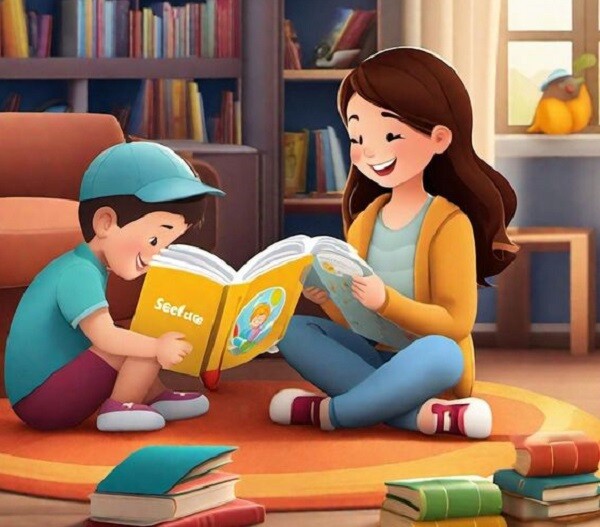Improving focus isn’t just about enhancing academic performance; it’s also crucial for a child’s cognitive growth and development.
How can we effectively improve focus? Child psychologist Yonghe from China offers parents four useful methods.

Pay Attention to Your Child’s Learning Strengths
Research has shown that depending on the dominant sensory channels, children’s learning styles can be categorized into visual, auditory, and kinesthetic types.
Some children are quick visual learners and excel at reading. Others have an auditory learning style, absorbing information more effectively through conversations or listening to others. Kinesthetic learners, on the other hand, grasp the world through touch or movement.

Pay attention to your child’s learning strengths.
Parents need to understand their child’s preferred learning methods to help build their confidence. Children can only focus better when they are confident and interested in what they are learning.
For example, many people say, “Math was my first love. It tortured me a thousand times.” If a child develops a fear of math early on and feels they have no control over it, it will be challenging for them. In contrast, some children excel at geography and love exploring maps and discovering new places. So, parents need to identify these strengths and encourage their children to build upon them.

Guide Your Child Based on Their Interests
We often see children highly focused while watching TV or playing video games, indicating that they can maintain attention. Parents can leverage this interest to guide their children effectively by conversing about their gaming experiences.
For instance, parents can ask questions like, “How many levels are there in this game? Who is the main character? What type of game is this, and how can you get better at it?”

Guide your child based on their interests.
Using your child’s interests as a tool for development is essential. When children hear a captivating story, they can retell it and imitate the vivid expressions, improving their communication skills.
In any era, children will have passions and hobbies. A parent’s task is to help them manage their emotions and control their behavior through family education and appropriate guidance. This way, children learn to use their time and energy efficiently.

Respect Your Child’s Attention Span
Young children typically have very short attention spans. For example, a three-year-old can usually focus for about five minutes. As they grow older, their attention span increases; a four-year-old can focus for up to ten minutes, and by the age of five, they can typically manage around fifteen minutes.
Notably, a six-year-old’s attention span can reach approximately twenty minutes. This indicates that for children of primary school age, concentrating for half an hour is already a significant challenge.
Therefore, it’s essential for parents to respect their child’s natural attention span. When you notice your child starting to lose focus, consider taking a break or switching to a different activity. This helps them stay comfortable, avoids overload, and contributes to forming positive habits in learning and exploration.
Training to improve attention doesn’t mean that longer focus durations are always better. Instead, this process should follow natural developmental patterns. Forcing children to pay attention for extended periods can lead to stress and discouragement.

Respect your child’s attention span.

Focus on Improving Diverse Skills
Children’s abilities are interconnected and form a system. Improvement in one area often leads to development in other skills.
For instance, a child with good observational skills will benefit from enhanced attention and judgment abilities. Combining these skills improves critical thinking and problem-solving capabilities.
Therefore, parents should provide opportunities for their children to engage in diverse activities. For example, interactive games, art, sports, and outdoor excursions broaden their knowledge and hone their social and communication skills.
During the transition from preschool to primary school, parents can apply these methods to help their children adapt quickly to the new term.





































